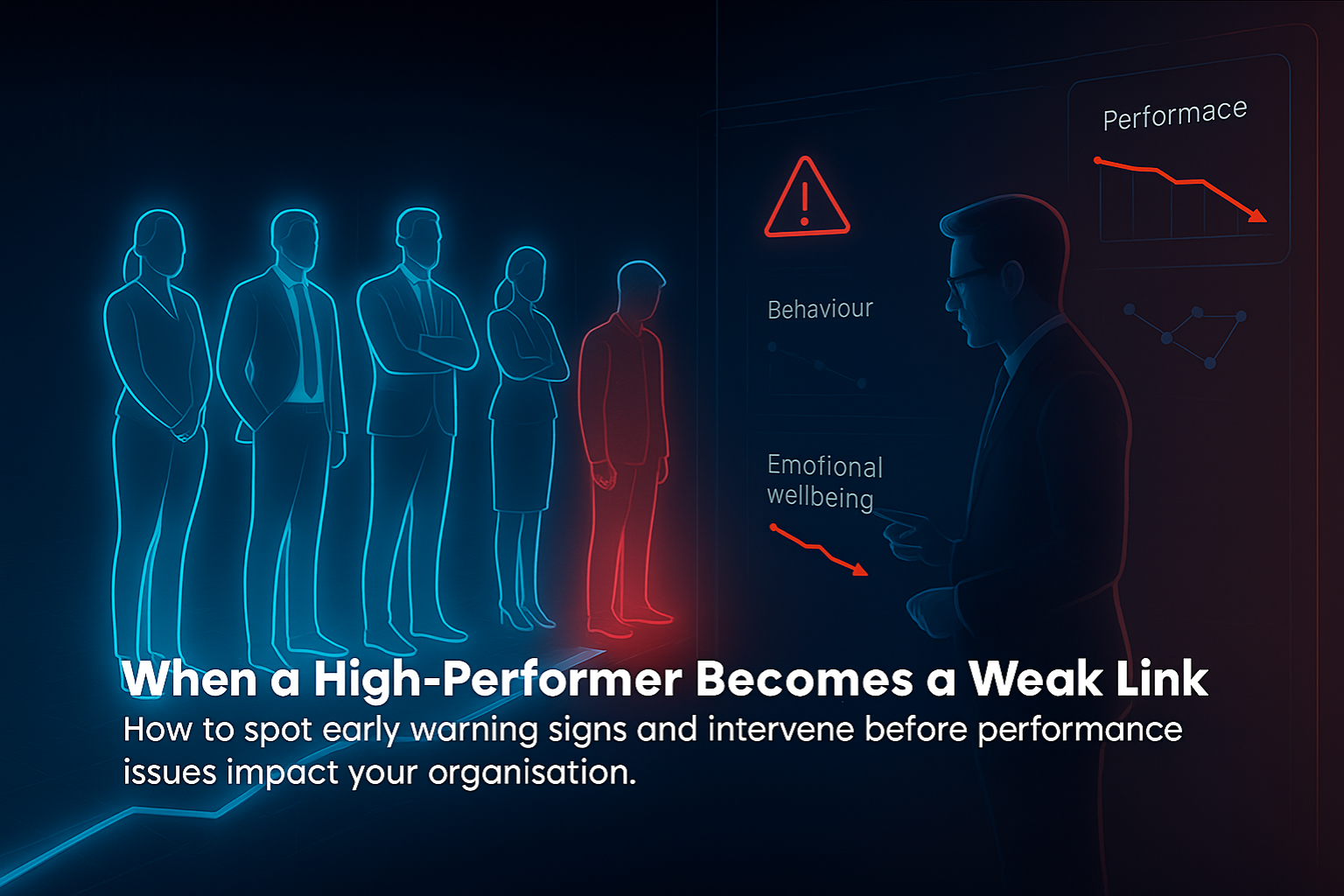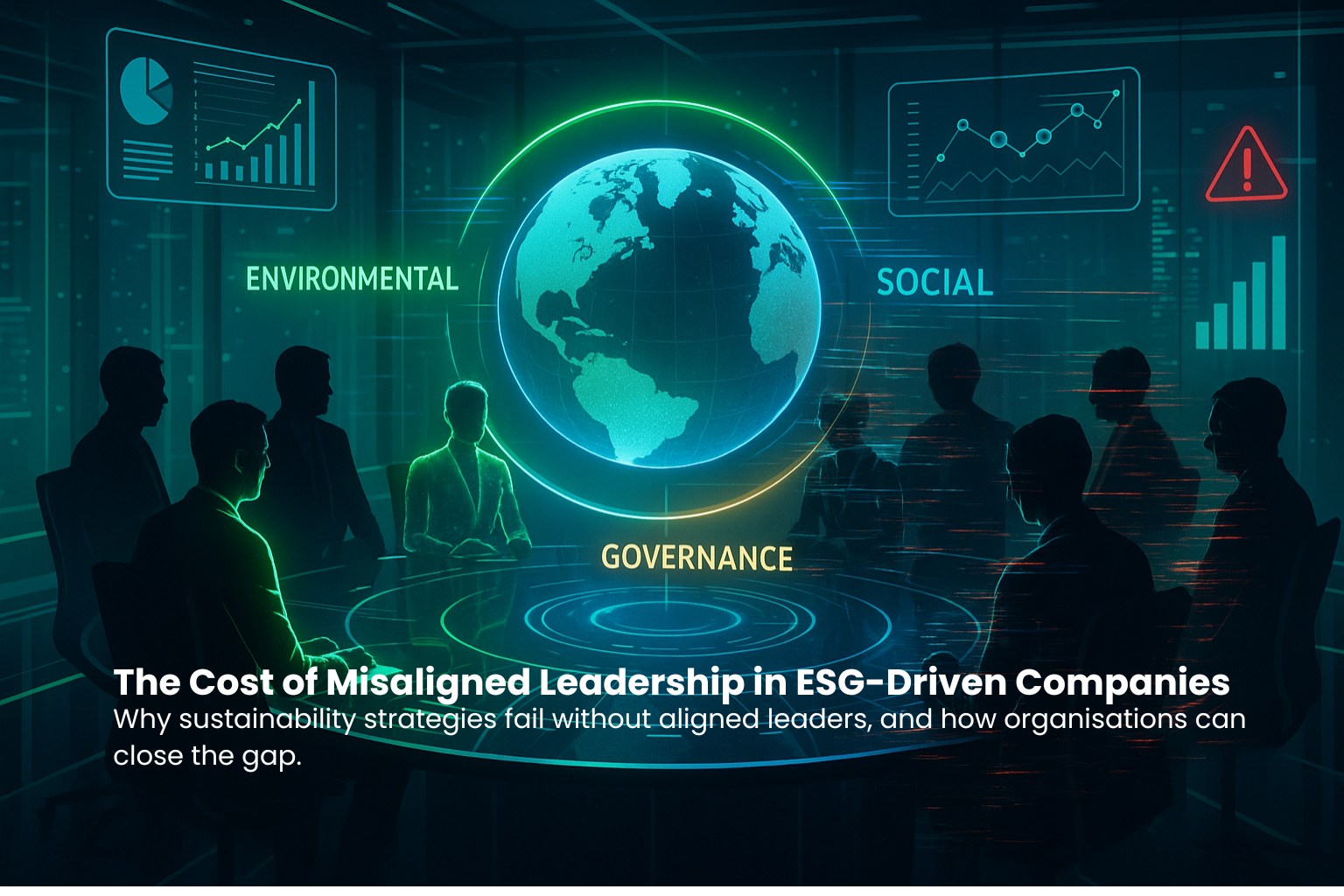When a High-Performer Becomes a Weak Link: How to Recognise and Act Early 🚩
When a High-Performer Becomes a Weak Link: How to Recognise and Act Early 🚩

In every organisation, there are individuals who have built their reputations on exceptional performance, your “go-to” people. They’re reliable, consistent, and often central to delivery. But even high-performers aren’t immune to decline. When their performance dips, the impact can ripple across teams, projects and culture.
The challenge?
High-performers are often the last people leaders expect to struggle, meaning early warning signs are missed and interventions come too late.
Here’s how to spot the shift early, and what smart, proactive organisations do to address it. 👇
1. Recognising the Early Indicators 🔍
High-performer decline rarely happens overnight. It’s usually gradual, subtle, and easy to rationalise away.
Early signs to watch for:
- Drop in pace or quality of work that was previously consistent
- Increased reactivity or defensiveness, especially during feedback
- Reduced collaboration, withdrawal from team interaction
- Over-reliance on past achievements instead of current contribution
- Missed deadlines or a noticeable need for more oversight
- Change in attitude, tone, or engagement during meetings
- Declining innovation — fewer ideas, less problem-solving initiative
The biggest red flag?
When “that’s not like them” becomes a regular observation.
2. Understanding Why It Happens 🧠
High-performers don’t become weak links simply because they “lose interest.” The causes are often legitimate and solvable.
Common underlying factors include:
- Burnout from long periods of overperformance
- Role stagnation, lack of challenge or future progression
- Cultural or team changes that disrupt their effectiveness
- Increasing complexity without sufficient support or resources
- Personal circumstances affecting focus or resilience
- The Peter Principle — promoted into a role misaligned with strengths
Recognising the “why” is crucial because performance problems in high-performers are usually contextual, not character-based.
3. Acting Early: What Effective Leaders Do ✔️
Timely intervention is the difference between recovery and long-term disengagement.
1. Start with a private, supportive conversation 🤝
Avoid assumptions. Ask exploratory questions about workload, challenges and wellbeing.
2. Reassess expectations and capability alignment
Are they in the right seat? Has the role evolved faster than the individual?
3. Provide structured support
Mentoring, coaching, resource adjustments or temporary de-scoping can restore performance quickly.
4. Clarify what “good” looks like now, not historically
High-performers often struggle when the expectations shift silently.
5. Monitor progress with clear, fair milestones
Support doesn’t mean lowering standards—clarity helps rebuild momentum.
4. When the Decline Is Irreversible 🚫
Sometimes, despite good intent and full support, the individual remains misaligned with the role’s demands.
This is where many organisations hesitate—often for months—because the individual’s legacy makes decisions emotionally difficult.
However, delaying action has consequences:
- Team resentment
- Leadership credibility erosion
- Project delivery risk
- Cultural stagnation
In these cases, redeployment, role redesign or decisive transition may be necessary.
Handled professionally, these moves protect relationships while safeguarding organisational performance.
5. Preventing High-Performer Decline in the First Place 🛡️
Proactive leadership drastically reduces the likelihood of top talent becoming weak links.
Build preventative habits:
- Regular career development conversations
- Predictable workload management
- Clear pathways for progression
- Psychological safety for raising concerns
- Ongoing skills development, especially in fast-evolving sectors
- Honest calibration of performance expectations
High-performers thrive when they feel challenged, supported and seen not only when they’re delivering at their peak, but throughout the journey.
High-performers are often the backbone of your organisation. But they aren’t invincible. Recognising early signs of decline and acting decisively protects your culture, strengthens your teams, and preserves essential capability.
The strongest organisations don’t just manage high-performers; they actively support and evolve them.
If you’re noticing shifts in your leadership team or senior talent and need strategic support whether through assessment, search, or advisory, Wyman Bain is here to help.
📩
Contact us: enquiries@wymanbain.com
🌐
wymanbain.com
📞
London: 0203 907 7730
📞
Bristol: 0117 287 2500



